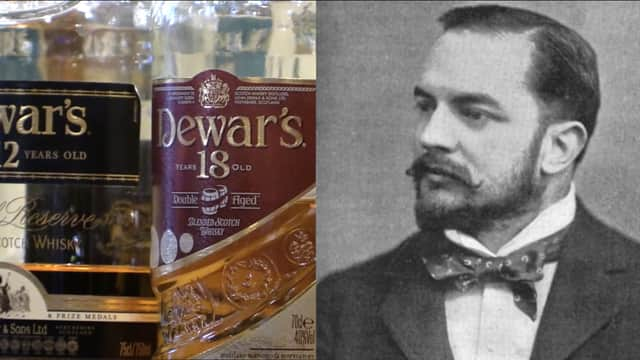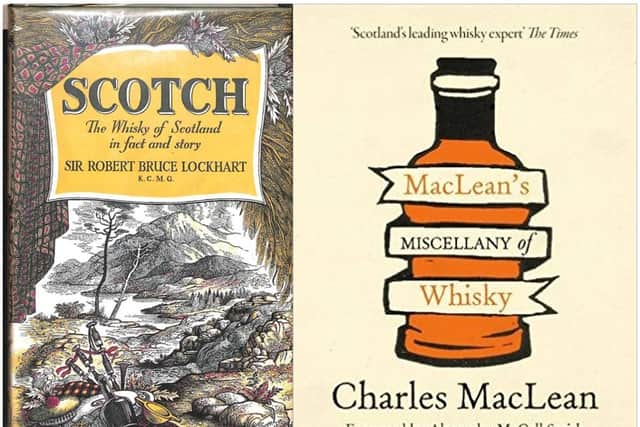Thomas Dewar: A lesson in whisky advertising


Dewar’s scotch has long been one of the most recognisable brands in the whisky world. Crack open a bottle and your palate finds itself at the epicentre of the Scottish flavour map.
The primary malt used to create Dewar’s is Aberfeldy with a slightly honeyed character and "a slim whisper of smoke like an echo off into the distance".
Advertisement
Hide AdAdvertisement
Hide AdThomas Dewar was born in Perth on 6th January 1864. He was the personification of scotch in the late 19th Century, but the degree of his success arose from mastering Scottish romanticism.


He would enlist every symbol, icon and effigy as he pitched a tartan-clad Dewar's with the enchantment found on the distant shores of Scotland.
Dewar 's adventure began when he journeyed from Perthshire for London with determination, boundless energy and a couple of letters of introduction. When he arrived, he immediately found the odds stacked against him with one addressee discovered dead and the other bankrupt.
Dewar's exploits are well documented
Writer Sir Robert Bruce Lockhart describes Tommy Dewar as “a born salesman, witty, dapper, genial and endowed with volcanic energy.”


He appeared at the Brewer’s Show at the Agricultural Hall and deafened the audience by filling the room with the warbling of bagpipes. An enraged committee demanded he cease playing but, thrusting out his proud chest, he defiantly proclaimed to the room the superiority of bagpipes over the English music boxes of the time.
Lockhart recalls the flock of journalists lapping up the unexpected ruckus and, knowing full well any publicity was better than none, Dewar continued to play despite the irate organisers threatening legal action.
In later years, Tommy Dewar was responsible for the first video advertisement in the world - a moving throwback to the ‘It’s the drink of your ancestors’ campaign appearing in magazines for years. In the two-minute film from 1900, a kilt-clad man drinks Dewar’s alone before being joined by his ethereal ancestors, all stepping out of their walled picture frames to participate in a surreal jig.
A final example of Dewar’s marketing prowess comes after acquiring premises on the south bank of the Thames by Waterloo Bridge in 1896, including a tower which was once purposed for manufacturing lead shot.
Advertisement
Hide AdAdvertisement
Hide Ad

The early print advertisement was turned into the first video ad
Charles MacLean’s Miscellany of Whisky describes the site as it was two years later.
“By 1989,” he writes, “the tower had been embellished by the largest neon sign in the world - a Highlander with his kilt blowing in the breeze, quaffing day and night, glass after glass of Dewar’s whisky.”
Dewar’s didn’t Tommy and his brother John continued to blend their whisky to hit a sweet spot with foreign markets and appeal to an international palate.


Frank Murphy, owner of The Pot Still bar on Hope Street in Glasgow, explains just how effective Dewar became at pushing the romantic notion of Scotch.
“He used it to such great effect that nobody else in the whisky world now uses that same iconic figure for fear of being accused of copying Dewar’s,” he says.
“Even though Tommy Dewar was the personification of Scotch whisky, it’s still his dad’s name that’s on the bottle.
“He didn’t chose to go so far as to make it all about himself - it was always about ancestors.”
Dewar's remains a popular choice around the world
Advertisement
Hide AdAdvertisement
Hide Ad“He had to set about building a business with nothing at all, but managed to attract attention, build a reputation, sell whisky like it was going out of fashion and somewhere that whisky had never really been sold before.”


As the first distiller to break ground in new emerging markets, Dewar’s Scotch became the brand that other labels aspired to compete with.
Thomas Dewar was knighted in 1902 and created a baronet, raised to a Baron in 1919. Thomas Dewar, 1st Baron Dewar died aged 66 on 30th April 1930, but having never married, the baronetcy became extinct.